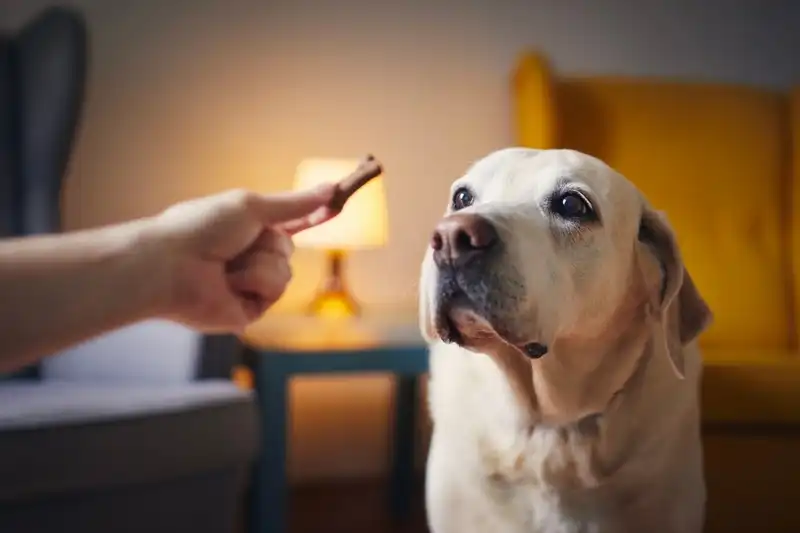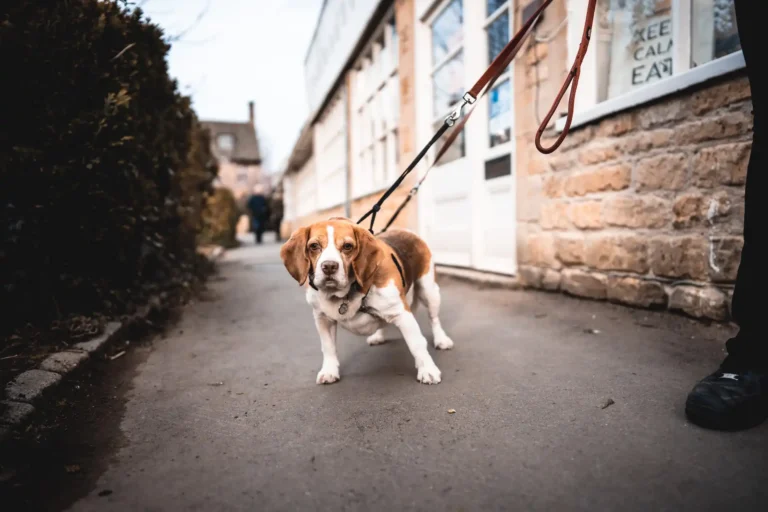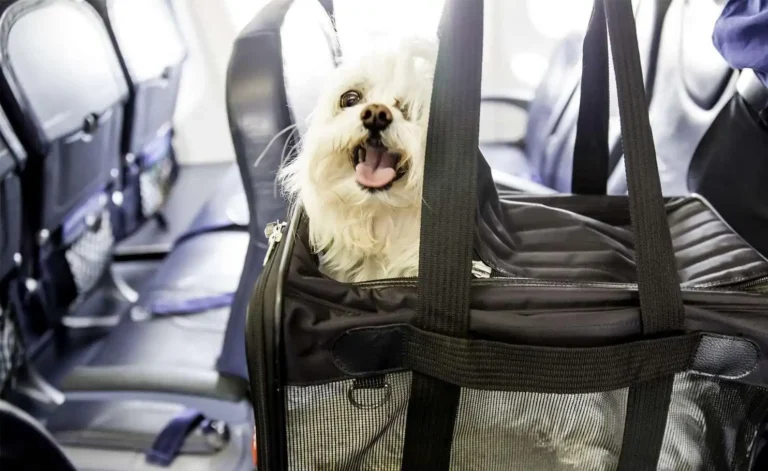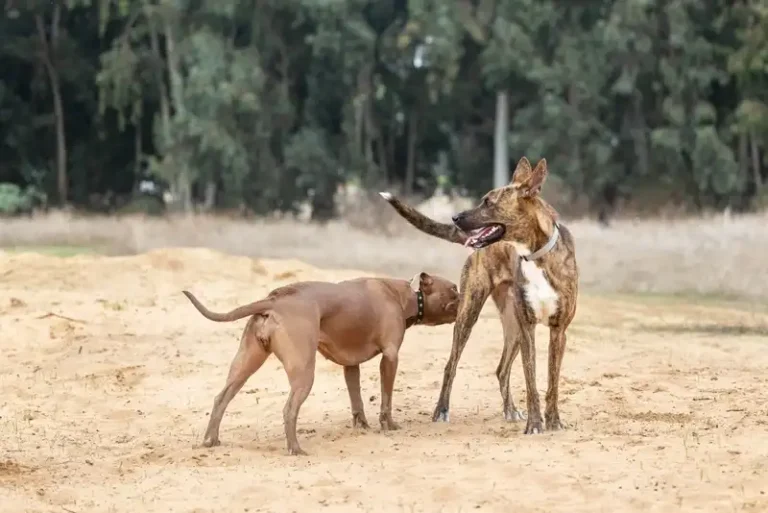Stop A Dog From Barking On The Street

Barking is one of the ways for a dog to communicate with the outside world, but living with a person requires following certain social rules. The question of how to wean a dog off barking can be especially acute, for example, if it cannot be left alone, and neighbors are forced to listen to it for several hours in a row. But there can be other scenarios: barking on the street at other dogs or people. In this article, we will tell you what to do if an adult pet or puppy constantly barks, how to wean a dog off barking in an apartment, at home and in other conditions. But first, let’s talk about the reasons for this behavior, what may be behind it and what methods of training dogs exist.
Is it possible to stop a dog from barking?
All dogs bark from time to time. When it happens infrequently and for a reason, there are no problems, but sometimes the pet barks constantly.
Weaning a dog from loud and prolonged expression of feelings is a very real task. But what method of solving it will be suitable for specific dogs and situations can only be understood in practice.
Why does the dog bark?
There are many reasons why a dog barks, and most of them are adequate to the situation, they provoke short-term barking and do not cause problems for others. But in some cases, a pet can “warm up” its vocal cords for hours, causing righteous indignation in neighbors and a feeling of helplessness in owners. Here is a list of the main reasons why dogs bark.
Protection of resources and territory
A pet can protect the territory it considers its own, or an object or item of interest to it from encroachment. When a threat approaches (a stranger, a relative, etc.), the dog begins to react to the object, and the closer it comes, the more likely it is to hear growling and barking.

Surprise, fear, anxiety
Fear and the stress it causes can lead to several responses in the body, including the “Hit” response, which is the need to protect yourself at any cost in the event of danger. Barking in this case is an intermediate stage that warns: “If anything happens, I will protect myself, so it is better to move away.” Often unfamiliar objects or items, such as a squirrel encountered for the first time in the park or a large garbage bag, can be barked at due to fear and anxiety, however, if nothing bad follows, the dog quickly gets used to them and stops reacting.
Boredom, melancholy, separation
A dog is a social animal. When alone, some pets can “howl” for hours while the rest of the family is away, regardless of the time of day. When such a dog is left alone, it literally begins to howl and bark, which, most often, does not please the neighbors.
In some cases, there is an anxiety disorder called “separation anxiety,” in which the dog cannot stand being alone. Often, this includes not only barking, but also destructive behavior .behavior and/or uncleanliness.
Play and joy from meeting
Excitement and excitement are possible not only from negative influence (fear), but also in anticipation of something good: playing with other dogs, meeting the owner, or in anticipation of a tasty treat. In this case, the inability to wait becomes so strong that the dog shows its overwhelming emotions by barking.
Attracting attention
Each pet has its own way of attracting the owner’s attention. Some whine, others follow the dog around, poke at his hands and feet, scratch the door, and others may start barking. Remember, if you react to barking (even with the phrase “stop barking”), which was done to attract your attention, you reinforce this action, and in the future the dog will resort to this method more often.
Pain
Sometimes a pet whines and barks when something hurts, because otherwise it cannot communicate this to its owner. The pain may be present on its own or be a response to touch, a change in position. If it seems that there are no other reasons for barking, it is worth showing the dog to a veterinarian for an examination.
What training and education methods exist?
There are many ways to combat barking, but it is best to start with improving the quality of life and well-being of the animal, reducing stress and the general level of arousal. Only in combination with this can we consider training and education methods . These methods differ in the stimuli that the owner or instructor uses during training and the methods of their application. Different methods are effective for different animals, so there is no universal method.
Positive reinforcement method
This is the most effective method of training, which has proven its effectiveness since the first domestication of animals. It is based on the use of some kind of encouragement: treats, games, praise, affection. The method of encouragement depends on what exactly your dog likes. The method allows you to quickly establish contact between the dog and the owner and hold the pet’s attention for a long time.

Its essence is to praise or treat the dog after the command is performed – this allows you to consolidate the correct reaction. After consolidation and development of a conditioned reflex, the positive reinforcement method can work without an unconditional stimulus (i.e. without encouragement). However, sometimes it is still worth returning to encouragement. In the situation with barking, we begin to encourage silence, increasing the time from a few seconds to a more significant period of silence.
Mechanical method
The mechanical method uses tactile stimulation on the dog, such as patting, pressing with the hand or using a leash. This method is based on negative reinforcement and has a number of disadvantages if used incorrectly. In addition, when training a dog using the mechanical method, it quickly loses attention and gets tired.
Contrast method
This method is based on a combination of the first two, when both positive and negative reinforcement are used. In this case, the reward can be a treat or a toy, and the negative stimulus can be mechanical action.
Social learning (do as I do)
Most dogs have a well-developed imitation reflex. A puppy learns by imitating its mother. And in adult dogs, this can be observed in the “chain reaction” of barking, when one individual starts barking, and the others immediately support it.
This property can also be used in training, educating dogs using the example of an already trained animal. Many dogs willingly perform actions following another individual or even the owner.
This method is usually used in combination with others.

Guidance method
This is another auxiliary method. The trainer uses various influences to motivate the dog to do what he needs. The combination of stimuli and rewards is selected individually for each dog, depending on its behavioral and psychological characteristics.
Shaping
This method can be compared to the game “Guessing”, where the dog has to figure out what action the owner expects from it. The method is also based on positive reinforcement, for example, with a treat or a clicker. It is often perceived by the dog as a game and is effective. However, it is important not to overload the animal so that it does not lose interest in training.
How to Stop a Dog or Puppy from Barking
Stopping a dog from barking can be a difficult task, especially if the dog has an easily excitable nervous system. Be patient and calm, be consistent and persistent, and the efforts will definitely bear fruit.
How to stop a dog from barking in an apartment
- In an apartment, pets most often bark at a knock on the door or at a bell. A dog develops a conditioned reflex to a bell in the following way: it rings (unpleasant) – I bark at the noise – the bell stops (reinforcement of my actions).
- If your pet barks at home and this causes inconvenience, in order to wean your dog off barking in the apartment, you need to do the following:
- Associate the doorbell with something pleasant (like a treat).
- Rebuild the chain of actions to a simple command, for example, “Sit”. It should look like this: rings the bell – I sit down – I get a treat (almost like Pavlov’s dog).
- Do not respond to the bell or knock until the dog stops barking.
- When your pet has calmed down, you need to praise and reward him.
Barking at night
Active dogs that have not had time to release their energy during the day can bark at night. If a dog has an unstable nervous system, it can bark at night from overexcitement or the slightest noise.
So, in order to wean a dog from barking at night, you need to:
- Pay more attention to your pet during the day.
- To make walks more active and increase their duration, some owners teach their pets to walk on a treadmill.
- In the evening, on the contrary, do not play around or excite the dog, but ensure that it remains calm.
- Teach relaxation.
- Follow the regime.
- Alone
Sometimes dogs bark when left alone at home – this can happen, for example, because of boredom. - It is possible to wean a dog from barking at home, but the process is gradual:
- First, you need to leave her alone in the room, you need to start with a short interval, up to a few seconds. If the pet immediately starts barking, then you need to wait until it calms down, go in and praise it.
When the pet is left alone in the room, the owner begins to leave the apartment. The principle is the same: you need to wait a few minutes until the dog calms down and starts to behave quietly – go in and praise.
After the apartment stage is mastered, the owner can leave the entrance for a while. Here it is better to enlist the support of neighbors who can monitor how the dog behaves.
It is important to give your dog enough time – all its unspent energy must be released during games, walks and physical activities. This will significantly reduce the likelihood that it will bark out of boredom in your absence.

Barking at other dogs
If your pet barks at other dogs not selectively, but at everyone, the problem is most often in socialization. Most likely, he was taken away from his mother early, he had little contact with his relatives and now simply perceives unfamiliar fellow tribesmen as a threat. There are many methods that will help you cope with this. Let’s consider one of them: LAT (“Look At This”).
How to Stop a Dog from Barking at Other Dogs Using the LAT Method:
- First of all, you need to stock up on treats and train your dog to respond to a clicker or the “Yes” command (or any other command that is convenient for you, the main thing is that the dog understands that it is doing everything correctly).
- Take the dog outside and when it encounters other animals that it usually barks at, “catch” the moment when it has not yet had time to react to them. It is important that it has already seen the trigger, in this case another dog.
- After your dog has looked at the stimulus, but has not yet started barking, you need to switch its attention to yourself – as soon as it looks at you, you need to reward it.
- These actions need to be repeated until the dog learns to ignore other animals.
How to stop a dog from barking at people
Barking at people also most often indicates insufficient socialization. This means that the dog simply has not been taught to behave well in society. By barking, it can warn people not to come closer or simply bark out of fear. In this case, the LAT method described earlier will also help, it will teach the dog not to react to people.

- In order to wean a dog from barking at every passerby, it is necessary to take care of the pet’s socialization:
- Puppies are much more curious and adapt to new things more easily, so it is better to start socialization as early as possible.
- You need to introduce your dog to other people gradually – such meetings should not cause fear or anxiety in your pet, because they often provoke a violent reaction in the animal.
- You need to let the dog get to know the object on its own: examine it, walk around it, and if desired, come closer and sniff it. You don’t need to force it to approach other people.
- Gradually, you need to increase the dog’s circle of acquaintances so that it sees people in different clothes (including special clothing).
- When interacting positively with people, your pet should be rewarded.
- The main thing is not to show your excitement. All your emotions are transmitted to your pet. If he feels your anxiety, it will be more difficult for him to remain calm himself.
How to stop a puppy from barking in an apartment?
If you start training a dog from puppyhood, it can make the task much easier, since it is easier to work with a puppy than with an already adult pet with an established character and formed reactions. All family members need to choose a single line of behavior and adhere to it constantly.
It includes several actions:
- Ignoring barking. If the puppy is attracting attention to itself, you need to not look in its direction. After some time, it will understand that barking does not work and will shut up. After that, you can pay attention to the puppy, reward it with a treat.
- Mastering commands. It is important to understand that the pet cannot remain silent all the time. The owner needs to teach it the command “Voice”. When the puppy learns to bark on command, you can begin to master the opposite command “Quiet”.
- Providing sufficient activity. To prevent barking and other unwanted behavior caused by boredom, it is essential to exercise, play, train, and pay sufficient attention to your puppy – it should be kept busy not only physically but also mentally.
- When your pet has calmed down and is silent, you must praise him and give him a treat so that he builds a cause-and-effect relationship between the reward and his own silence.
- What should not be done?
- Let’s list things that can not only interfere with a dog’s training, but also harm it.
- Here’s what you shouldn’t do in the process of education:
- Swear and shout;
- Physically punish the dog (the maximum that is permissible when you need to wean a puppy or an adult pet from barking is a prohibiting command and the introduction of an “unpleasant” element, for example, clapping your hands);
- Give sedatives without a doctor’s prescription.
- Methods such as devocalization (surgery to cut the vocal cords) are also not recommended. The surgical intervention itself is fraught with complications and infections.
- The operation does not solve behavioral problems, but only “turns down” the volume of barking.
- We also do not recommend using “Anti-bark” collars. The principle of their operation is the same, the only difference is the effect on the dog. These methods are inhumane, and the excitement will not go away, but will simply be expressed in another form – damage to things, hyperactivity, psychosomatic diseases.

Additional tips
Dogs can use barking for their own purposes. For example, if your pet tries to achieve something with his voice and succeeds, he gets positive reinforcement and will bark again in similar situations.
Don’t forget about the dog, even if a new family member has appeared in the house – it needs attention at such moments more than usual.
You need to devote enough time to your pet.
Motor actions will help relieve tension, for example, you can give your pet something to chew on. Here, the owner’s task is to ensure that the dog does not damage property, but chews on what it is allowed to: special toys and treats.
The pet can release energy outside. Do not forbid him to bark outdoors, in the forest or in the field, so he will understand the appropriateness and inappropriateness of this action.
Dog Breeds That Love to Bark
The tendency to bark depends on the breed and individual characteristics of the dog.
Particularly “vocal” ones include:
- Beagle . The beagle’s unique, ringing voice is its calling card. But what’s good for hunting can cause a lot of problems in an apartment.
- Huskies . They rarely bark, but they compensate for this with a loud howl. And huskies can howl for a long time and at any time of the day.
- Yorkshire Terrier . These miniature companion dogs sometimes turn into a continuous “bell”. Despite their small size, they have a brave terrier soul, ready to protect the territory from any stranger.
- Pomeranian Spitz . Representatives of this breed have a playful, cheerful nature, and they are great lovers of barking from an excess of emotions.
- Of course, among the representatives of the “quiet” breeds there are also easily excitable pets, but for the most part they are distinguished by a calm, balanced disposition:
- Basenji . These small dogs are considered to be among the quietest. Barking is not typical for them, basenjis make sounds similar to yodel, but they do this infrequently.
- Bernese Mountain Dog . They are distinguished by their imperturbability and calmness, and never bark unnecessarily. Bernese Mountain Dogs are peace-loving, have a strong, stable psyche.
- Akita Inu . Representatives of this breed also bark only when necessary and very delicately. But their natural independence and stubbornness make their upbringing a difficult task.
- English Bulldog . The little gentleman of the dog world is completely non-aggressive, despite his menacing appearance. He is unhurried, slightly lazy and rarely barks.
- Chow Chow . The appearance of these dogs is quite consistent with their inner world. They are slow and thoughtful, but they will definitely not disturb their family and neighbors with frequent or prolonged barking.






